
WordPress, the traditional CMS created by Matt Mullenweg’s Automattic in 2005, has dominated the web development space for decades. Even after decades, WordPress remains widely adopted and powers 43.5% of websites, which is around 1.119 billion websites.
As new CMS providers enter the space and eat from WordPress’ market share, we must ask — and answer — these questions:
- Is one of the newer WordPress alternatives better for you?
- How do you make the right choice?
In this article, we explore the answers to these questions in detail by exploring top WordPress alternatives worth knowing and factors to consider when choosing between them. Let’s dive in.
TL;DR:
Here’s the list of the best 13 WordPress alternatives we’ll consider:
- Monolithic CMSs (Joomla, Drupal, Optimizely)
- Low code or no-code page builders (HubSpot Content Hub, Webflow, Wix)
- Headless CMSs (Prismic, Sanity, Hygraph)
- Ecommerce CMS (Adobe Commerce, BigCommerce, Shopify, Squarespace)
Want a rundown of top website CMSs?
Explore our detailed guide that covers the top 20 CMS solutions you should know and their features, pros, and cons.
How to approach WordPress alternatives
Instead of suggesting individual alternative providers in this post, we’ll be covering different categories of CMSs to help you find the optimal solution.
Because CMS providers, in general, tend to fall into specific categories, each with specific strengths and weaknesses, it’s better to compare these to decide which type of CMS you want to use. Then, the search for a provider within that category will be much easier and more efficient.
In this post, we will cover the pros, cons, and use cases of four different types of CMSes:
- monolithic CMSes
- no-code/low-code CMSes
- headless CMSes
- e-commerce CMSes
Monolithic CMS
Before looking at the newer WordPress alternatives today, let’s start with what type of CMS WordPress is: it’s a monolithic CMS. A monolithic CMS is your traditional all-in-one installation, with one platform that does everything from managing your website's content to dictating the technology running it, and WordPress isn’t the only one. So, its closest alternatives are in this category.
Simply put, monolithic CMSs keep everything in one place (content and code). Let’s explore some monolithic CMS solutions that you can use as WordPress alternatives.
Drupal
Drupal is a flexible open-source CMS that enables users to create, manage, and publish various types of digital content. It was developed in 2000 and has since grown into one of the most popular CMS platforms in use today.
Whether you are running a simple blog, a corporate website, or a complex web application, Drupal provides the tools and features you need to build an online presence.
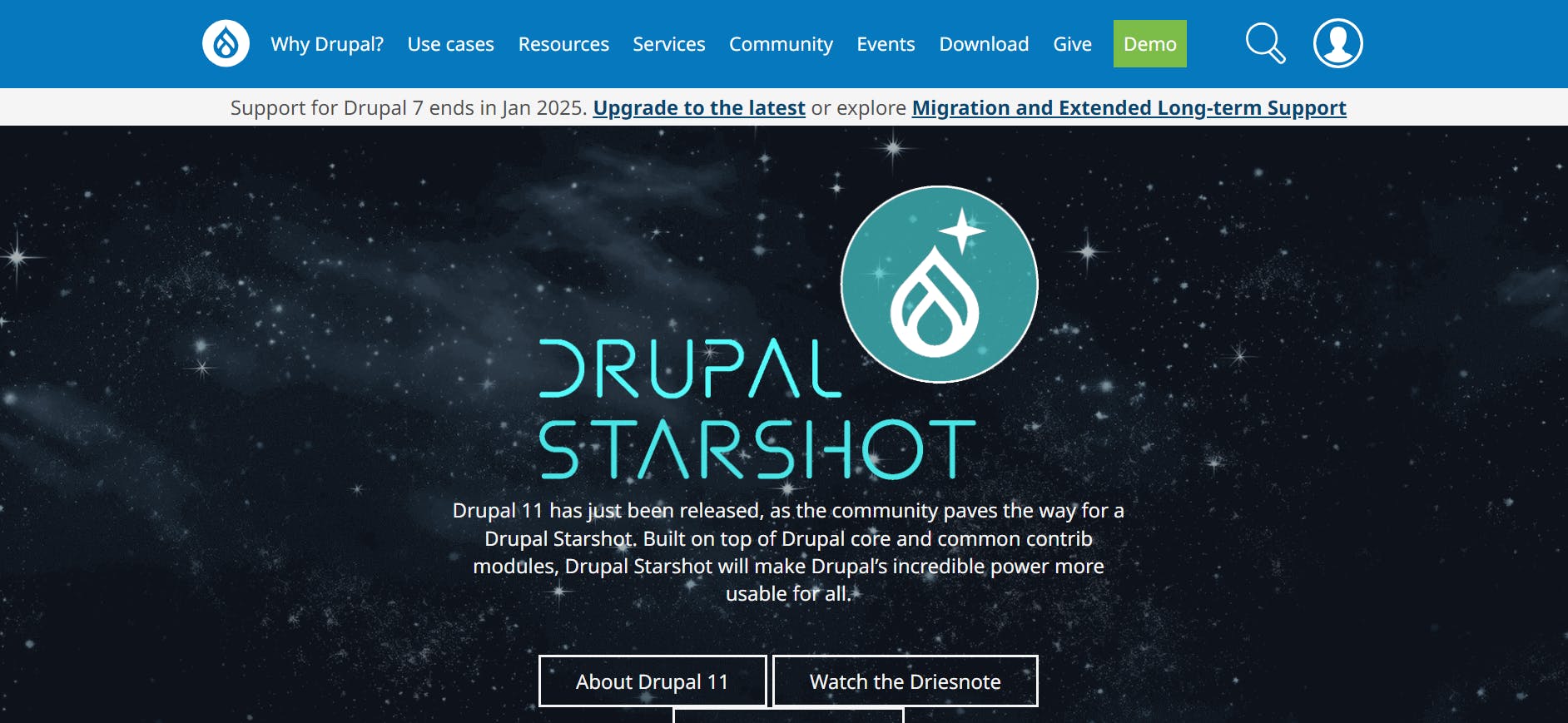
Drupal features
- Supports 100+ languages
- 3,100 themes
- 52,400+ third-party integrations called modules
- Includes built-in accessibility tools to ensure websites are accessible to a wide range of users
- Supports personalization, allowing you to create customized experiences for users
Example website
Tampa International Airport’s website is powered by Drupal.

Drupal pricing
Drupal is open-source and, therefore, free to use.
Pricing consideration factors for monolithic CMSs
It is worth noting that while many Monolithic CMS solutions are free and open-source, there can often be additional costs, such as more expensive servers and hosting-related features. It is essential to understand these pricing considerations when choosing which solution is best for you!
Joomla
Joomla allows you to create and manage websites with relative ease. Originally launched in 2005, it has gone on to become one of the world’s most widely used open-source platforms for building everything from simple personal blogs to complex online applications.
While it may be slightly more complex than some user-friendly platforms like WordPress, Joomla offers extensive customization and control for users who need it.
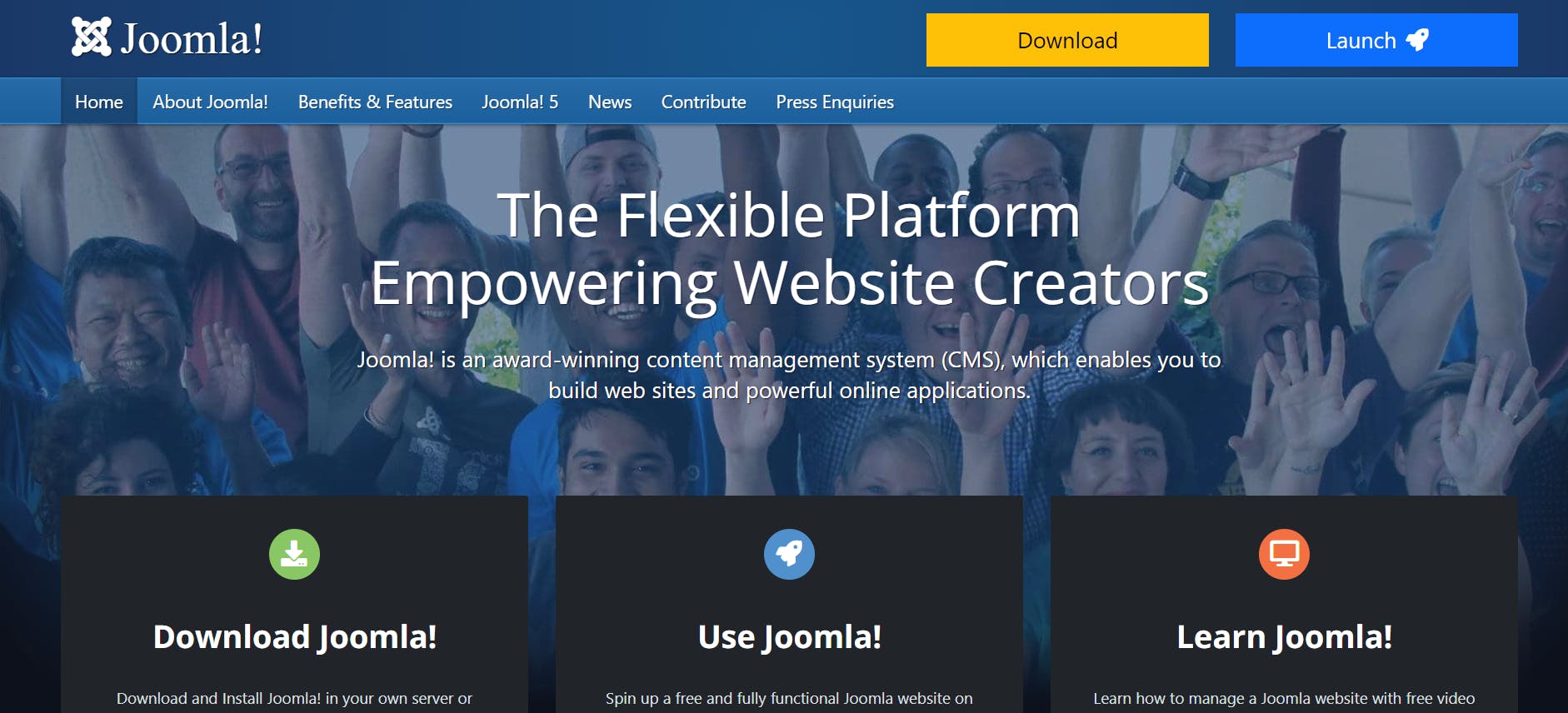
Joomla features
- Offers multilingual support with over 70 translation packs available
- Provides built-in SEO tools
- Highly flexible and allows you to create various types of websites, from blogs to business sites and community portals
- Provides 5,200+ extensions to expand your website’s functionality
- Provides support for website banners
- Provides search functionality so visitors can easily find information on your website
- Supports easy core and extension updates with one-click update functionality
Example website
RPJ Accountancy’s website is powered by Joomla.
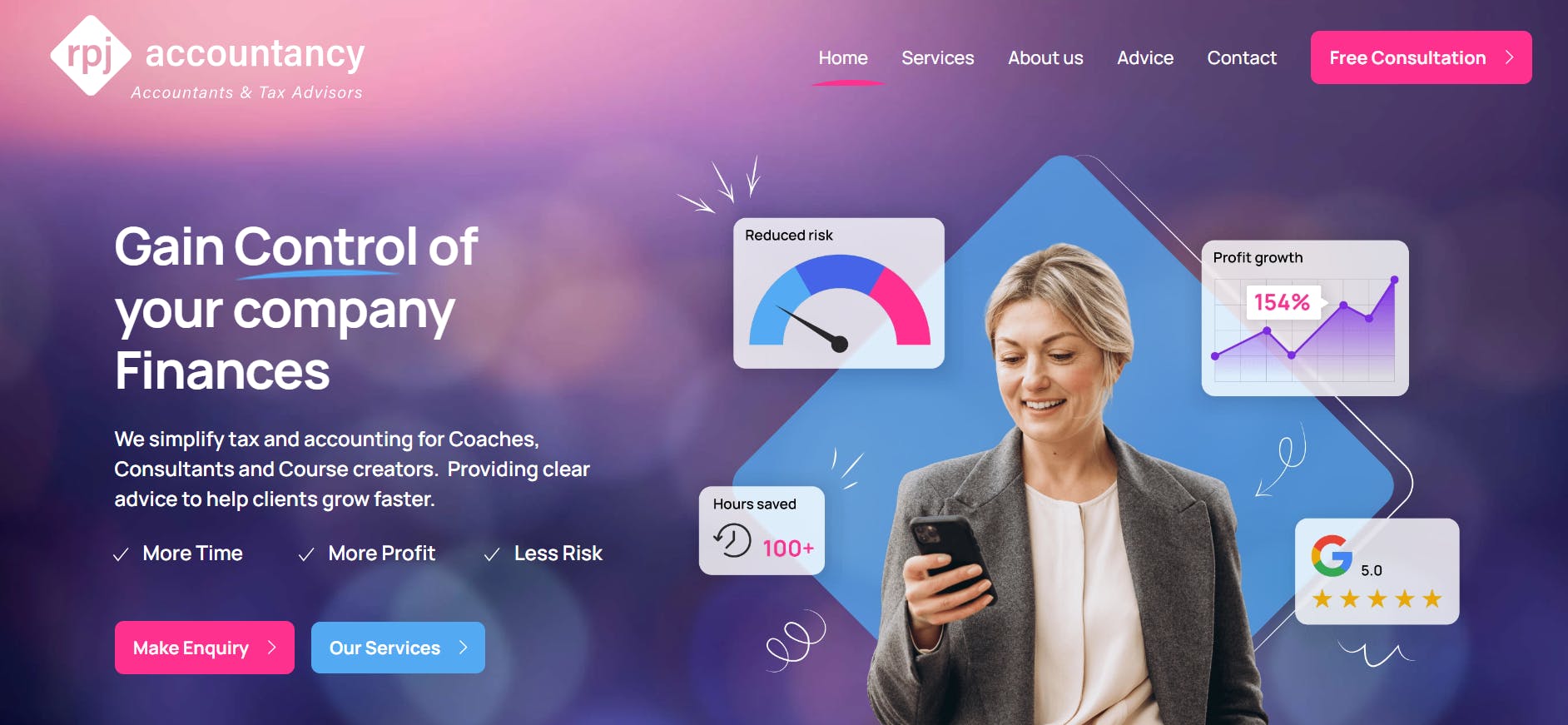
Joomla pricing
Joomla is open-source and free to use.
Optimizely
Optimizely is a comprehensive digital experience platform (DXP) created to support you in creating, managing, and optimizing their digital experiences across all channels.
Part of Optimizely’s DXP offerings is a CMS designed for both marketers and developers. The CMS module provides a visual, user-friendly interface for content creation and management, allowing users to build, preview, and publish content across multiple channels seamlessly.
Optimizely’s CMS integrates advanced personalization, AI-driven content recommendations, and omnichannel support, making it a flexible solution for businesses looking to deliver tailored experiences to their audiences.
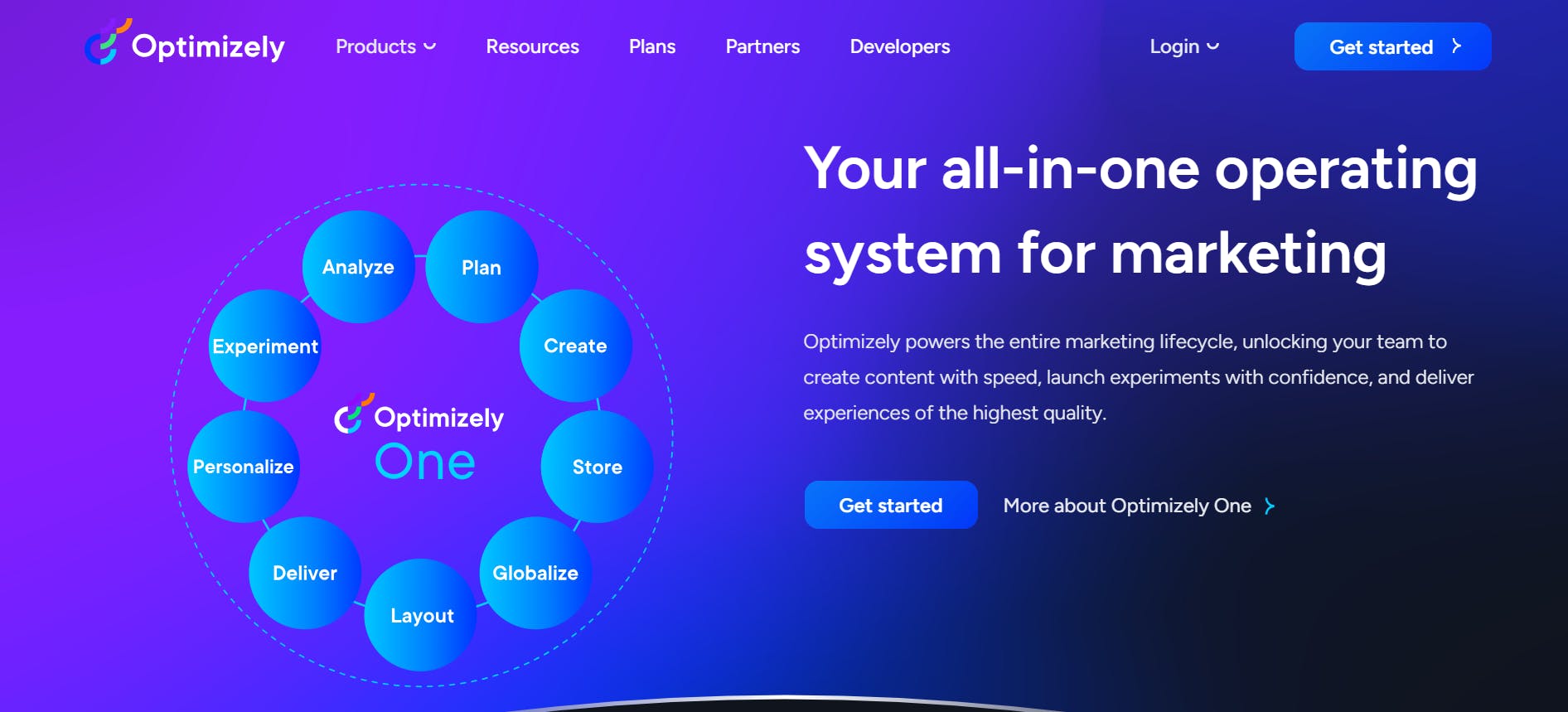
Optimizely features
- 250+ integrations
- Offers a visual builder for easy page creation and editing with a WYSIWYG editor
- Allows previewing content across devices for side-by-side editing
- The Audiences feature allows you to personalize content based on location, behavior, and profile data
- Provides AI-powered content recommendations to deliver relevant content variations
- Supports drag-and-drop functionality
- Allows you to manage content in multiple languages
- Includes SEO features for content optimization
- Provides a Commerce Connect feature to design and deliver enhanced e-commerce experiences
Example website
RAKBANK’s website is powered by Optimizely.

Optimizely pricing
Optimizely’s pricing is tailor-made and available on request.
Low-code or no-code page builders
No-code or low-code site builders are similar to the more traditional monolithic CMS, but they’re often more refined and simplified in user experience. In most cases, the vast majority of the code has been abstracted away from you because the product you’re using will typically do all the heavy lifting, like generating the code and handling changes and deployments.
In essence, the CMS handles all the work a normal development team would do for your website. So, you’ve just got to focus on designing and writing the content for your website and making sure it serves your business’s goals.
Let’s explore some low-code and no-code page builders that you can use as WordPress alternatives.
HubSpot Content Hub
HubSpot Content Hub is a CMS system that’s fully integrated into HubSpot’s broader marketing platform. It helps marketers and content creators manage their websites while simultaneously tracking performance and automating marketing tasks. HubSpot’s all-in-one approach allows you to focus on growth without the complexity of managing multiple tools.
HubSpot Content Hub’s integration with HubSpot’s CRM and marketing tools makes it easier for companies to build their online presence while also nurturing leads and managing customer relationships.
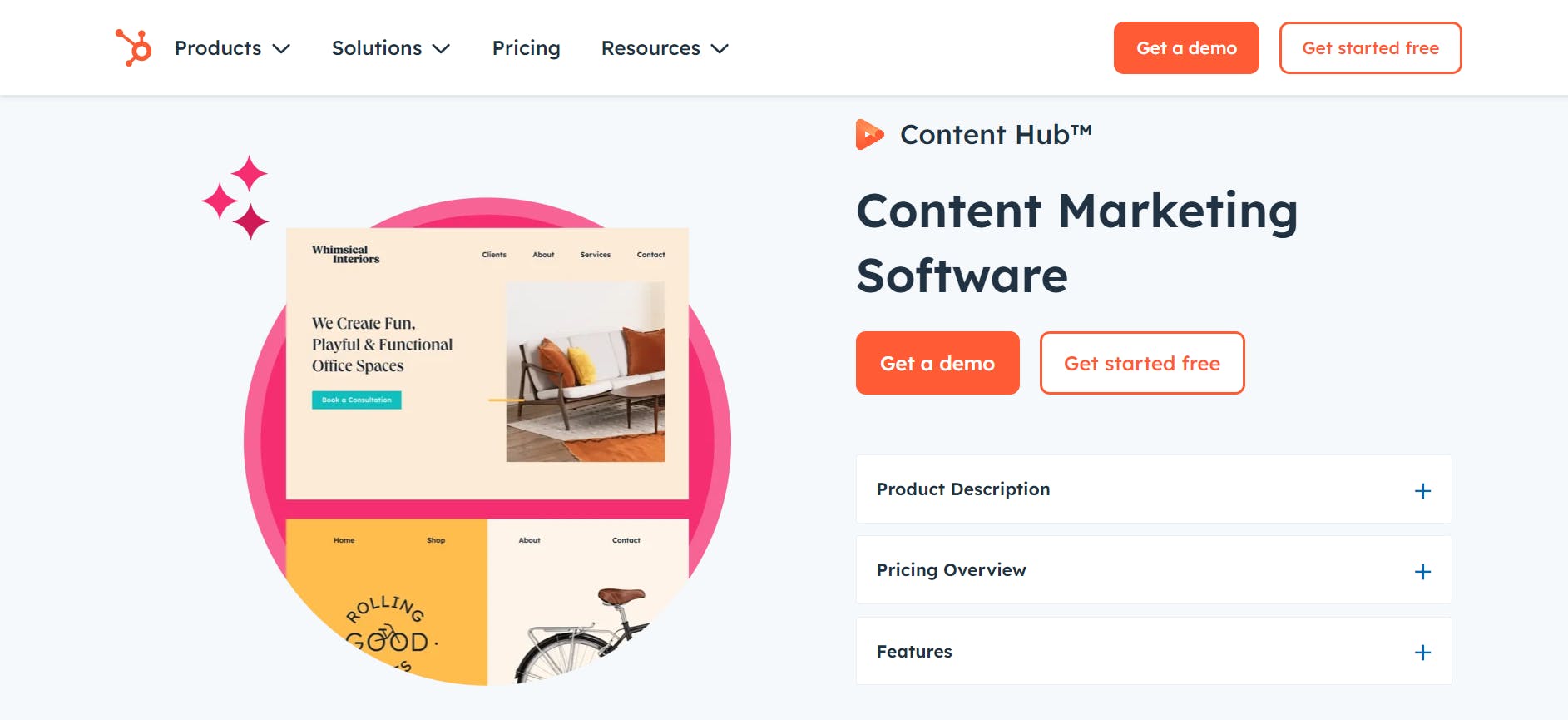
HubSpot Content Hub features
- Allows you to embed video and podcast content into your website, emails,
- AI-powered content generation
- Lead capture tools
- The HubSpot Template Marketplace with 500+ themes and templates to choose from
- The HubSpot App Marketplace with 1,700+ apps and integrations
- A/B testing tools
- Advanced analytics and reporting
- Supports creating members-only content experiences
- A suite of SEO marketing tools that help you plan content strategy, monitor content rankings, integrate Google Search Console for deeper insights, etc
- AI-powered content repurposing software that remixes your content for multiple channels and audiences
- AI blog writer that generates blog posts in seconds
- A case study generator tool that generates customer success stories from call transcripts, emails, and interviews
Example website
Acre Security’s website is powered by HubSpot.
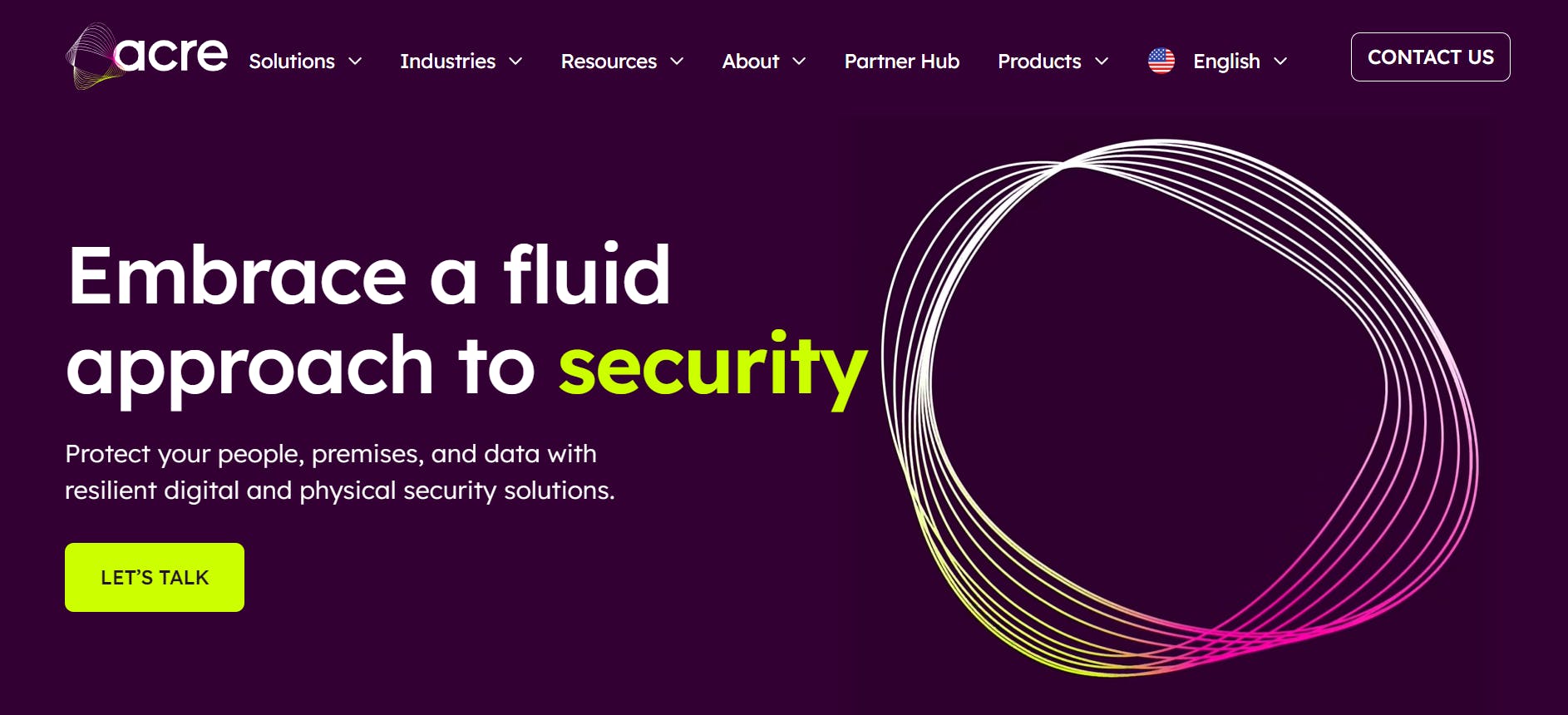
HubSpot Content Hub pricing
HubSpot Content Hub’s pricing starts at $20 per month per seat.
First time here? Discover what Prismic can do!
👋 Meet Prismic, your solution for creating performant websites! Developers, build with your preferred tech stack and deliver a visual page builder to marketers so they can quickly create on-brand pages independently!
Webflow
Webflow is a design-first CMS that bridges the gap between visual website builders and web development tools. It empowers designers to create responsive websites without needing to write code, while also offering the flexibility for developers to dive into the code when needed.
Webflow is ideal for freelancers, agencies, and businesses looking to have full creative control over their website design.
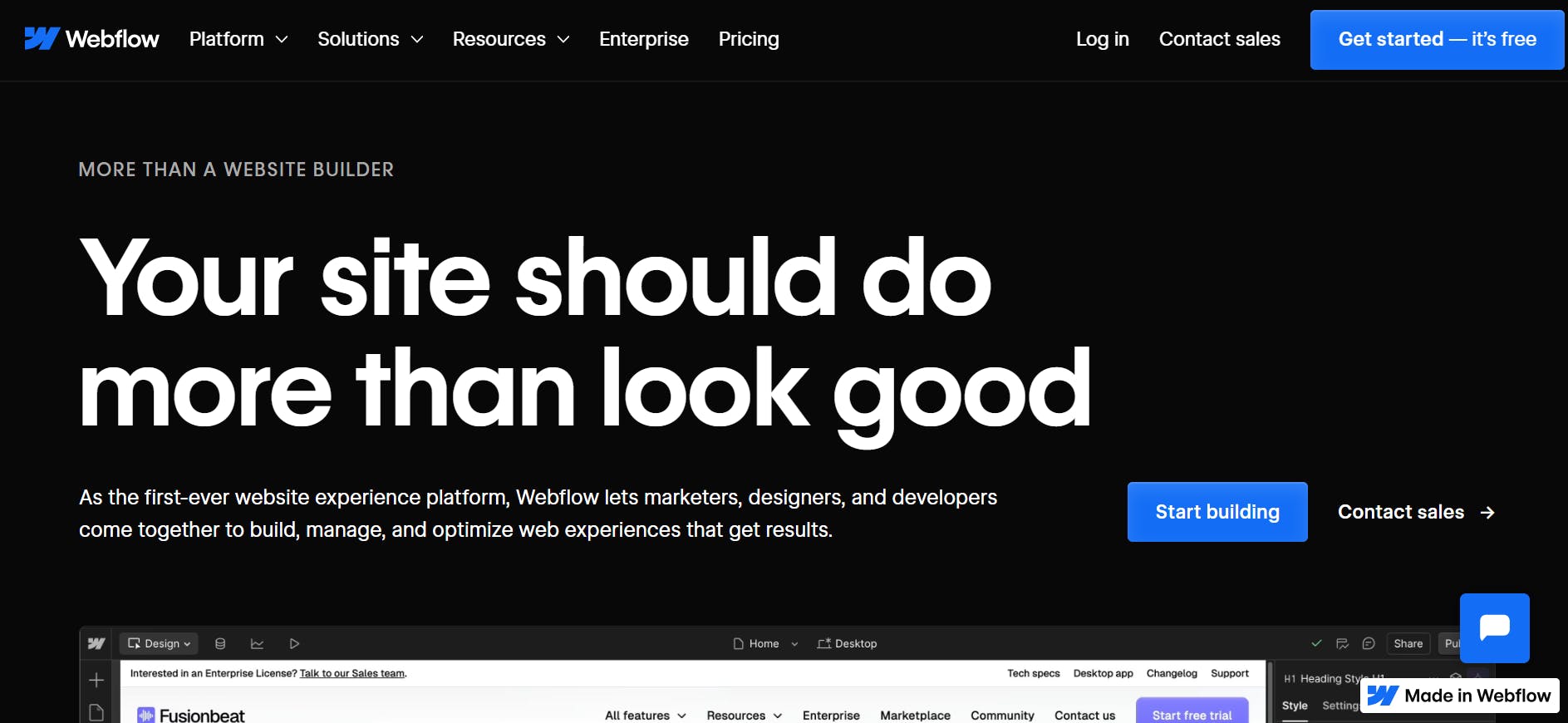
Webflow features
- Drag-and-drop editor for designing websites
- Allows full HTML, CSS, and JavaScript customization
- 14,000+ templates
- 200+ third-party apps
- Built-in SEO tools for on-page optimization
- Supports the creation of complex animations and interactions
- Supports e-commerce features like product management, payment gateways, and shipping options
- Allows you to export clean, production-ready HTML, CSS, and JavaScript code
- A Figma to Webflow plugin that turns static designs into production-ready code
- The Webflow AI Assistant with features like on-brand content generation, localization, and AI-poweredA/B testing and personalization that help you build faster and better
Example website
Bench Accounting’s website is powered by Webflow.
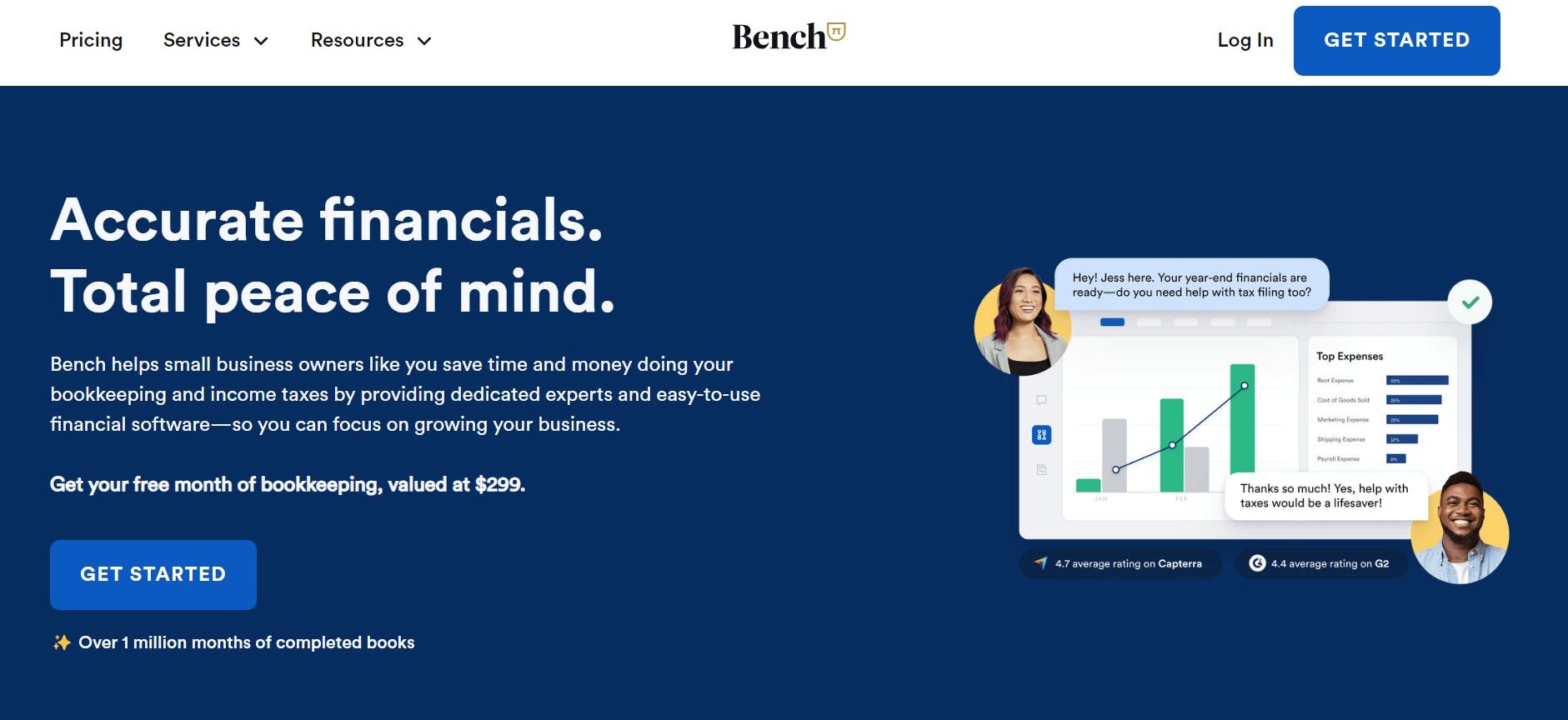
Webflow pricing
Webflow’s pricing starts at $14 per month.
Wix
Wix is a cloud-based website builder that gives you users the tools and services needed to create websites and mobile apps through a drag-and-drop interface. This all-in-one solution appeals to a broad audience, from hobbyists to small business owners, due to its large template library, and the fact that it allows you build websites without needing technical skills.
Wix was founded in 2006 and has grown significantly. It now boasts millions of users worldwide, ranging from individuals and small businesses to large organizations.
Headless vs. no-code website builders
Learn about the difference between no-code website builders like Wix and headless page builders like Prismic in our “headless vs no-code” article.
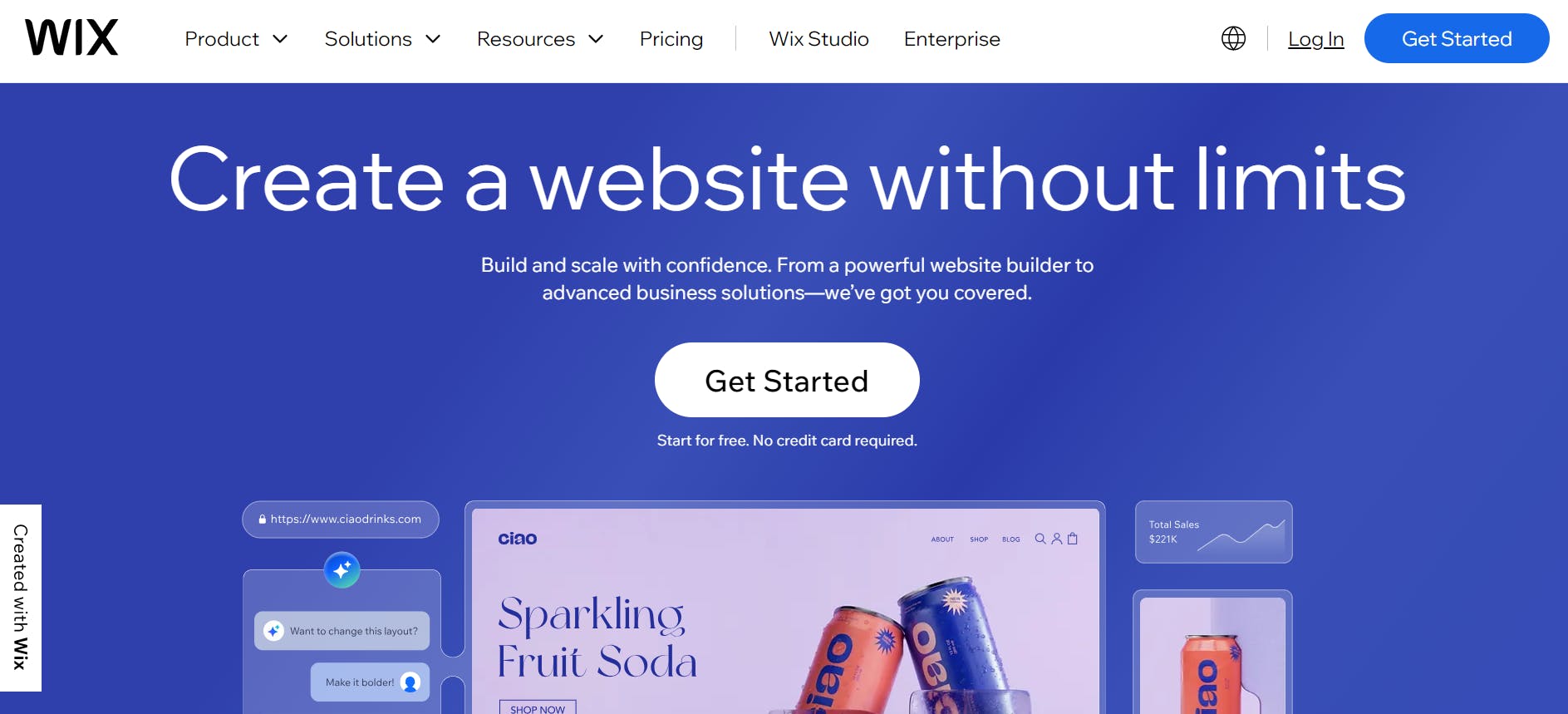
Wix features
- A drag-and-drop editor for easy website design
- 900+ website templates
- 500+ third-party apps to integrate into your website
- Provides a suite of free business tools. This includes a business name generator, a logo maker, and a form builder
- Provides a mobile app builder for creating iOS and Android apps
- Supports multilingual websites
- Built-in no-code animation effects
- Allows you to add custom code to your site for advanced customizations and functionality via its code development platform
- AI-powered functionality for use cases like removing image backgrounds, generating images, designing emails, and more
Example website
Dogs of Charm City’s website is powered by Wix.
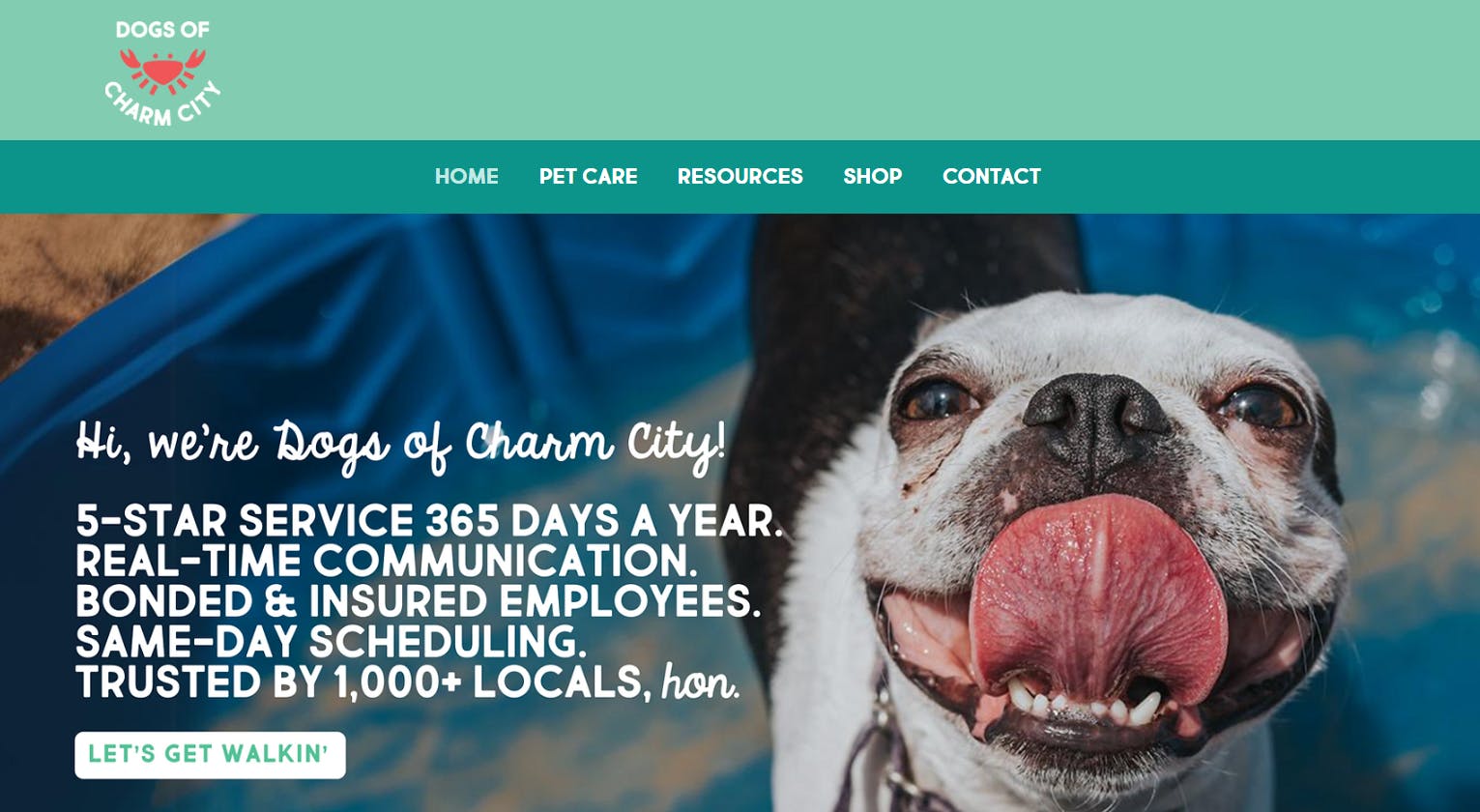
Wix pricing
Wix’s pricing starts at $17 per month.
Headless CMS
Headless CMSs are on the leading edge of technology in this space. No longer is the content of your website coupled closely with the code and architecture of your website. They’re not even stored on the same server anymore.
To put it simply, headless CMSs take care of the content editing experience, content storage, and sending content to websites through APIs, while developers can build fully custom websites to display that content. That means that the website itself can evolve with the latest technology because it’s not controlled by the CMS.
Headless CMSs are the complete opposite of monolithic CMSs like WordPress. Unlike in WordPress, your content is no longer coupled to the code, database, or server. Because of this decoupling, there’s a greater level of freedom to build a website that works for you and not just one that pleases the CMS.
Let’s explore some headless CMS solutions that you can use as WordPress alternatives.
Prismic
While commonly known as a headless CMS, Prismic is more than that. It is a page builder that builds on the headless approach and empowers content and development teams to ship on-brand pages and manage website content effectively.
Build pages as easy as a slide deck
Learn how Prismic empowers you to build websites as intuitively as you would a slide deck.
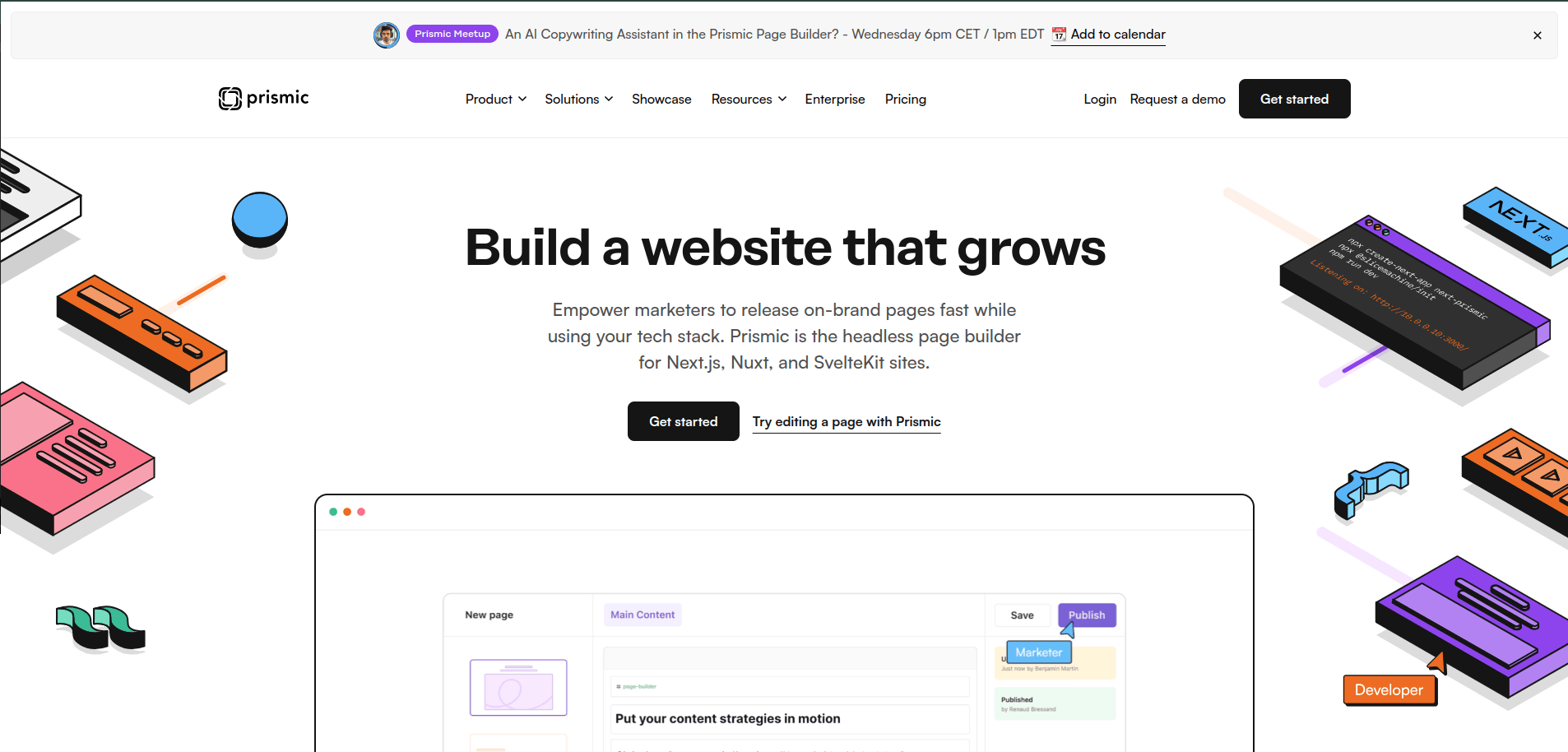
Prismic allows developers to build custom components that are then turned into reusable blocks, making it easier for marketers to create and launch websites.
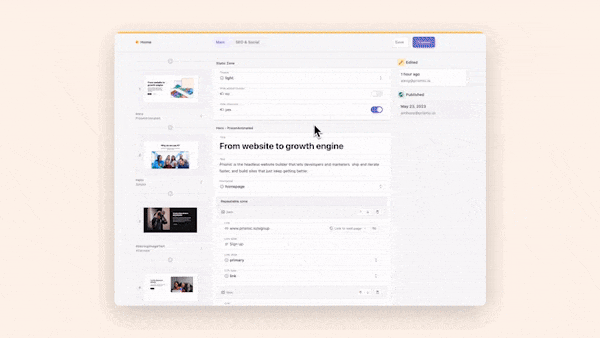
One of the key features of Prismic is its "slices" approach, which allows you to create modular components that can be reused across the website, speeding up both development and content deployment. This blend of a page builder with headless architecture makes it ideal for teams that need flexibility, performance, and the ability to quickly iterate on content.
Prismic features
- A visual page builder with a drag-and-drop editor for crafting pages
- Real-time page previews
- Slices, which are reusable blocks of your website . You can create slices for hero sections, call-to-actions (CTAs), features, testimonials, and other essential website sections
- Prismic AI, which allows you to quickly add new page sections or update existing ones, generate on-brand and context-aware suggestions straight from your Page Builder, and handle content translations
- Prismic’s Migration API, which streamlines the migration process and enables you migrate up to 1,000 pages at once to Prismic
- A custom image component with built-in image optimization and editing functionality.
Example website
Moss’s website is powered by Prismic.

Prismic pricing
Prismic’s pricing is free to start. The first paid plan is from $15/mo or $10/mo if billed annually.
Sanity
Sanity positions itself as a “content operating system” that allows you to create, manage, and distribute content across various digital touchpoints. Its composable architecture ensures that content can be seamlessly synchronized and reused across multiple channels, including websites, mobile apps, and more.
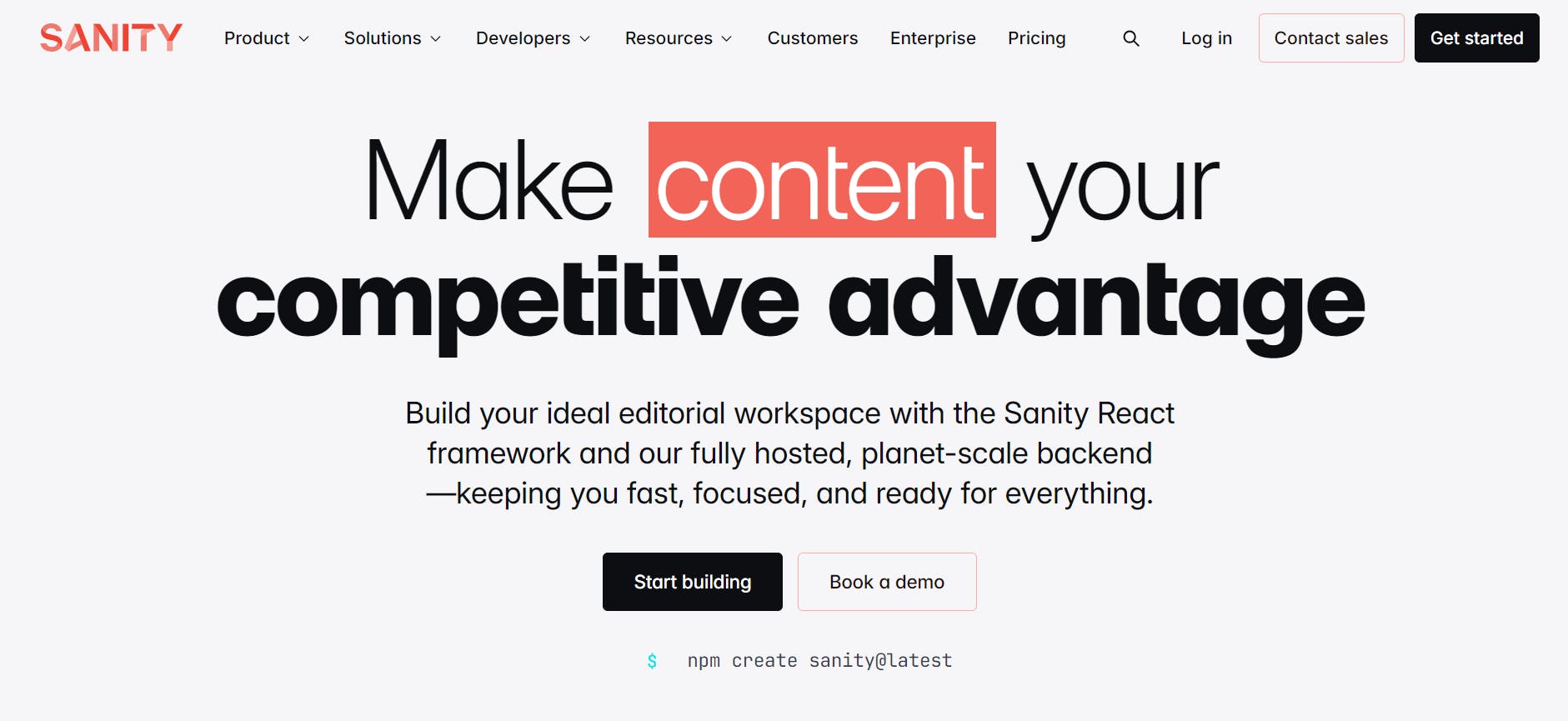
Sanity features
- 20 starter templates
- 10+ integrations
- Over 150 official and community-create plugins, tools, custom input components and dashboard widgets
- Real-time editing and previews
- Sanity offers GraphQL and GROQ for querying your documents
- Provides a mutation API for content updates, which streamlines both large-scale and small-scale content updates with fewer API calls
- Sanity AI Assist, which automated tasks like multilingual translation, enhancing variants for A/B testing, generating image and text content, boosting SEO, and more
Example website
Amplitude’s website is powered by Sanity.
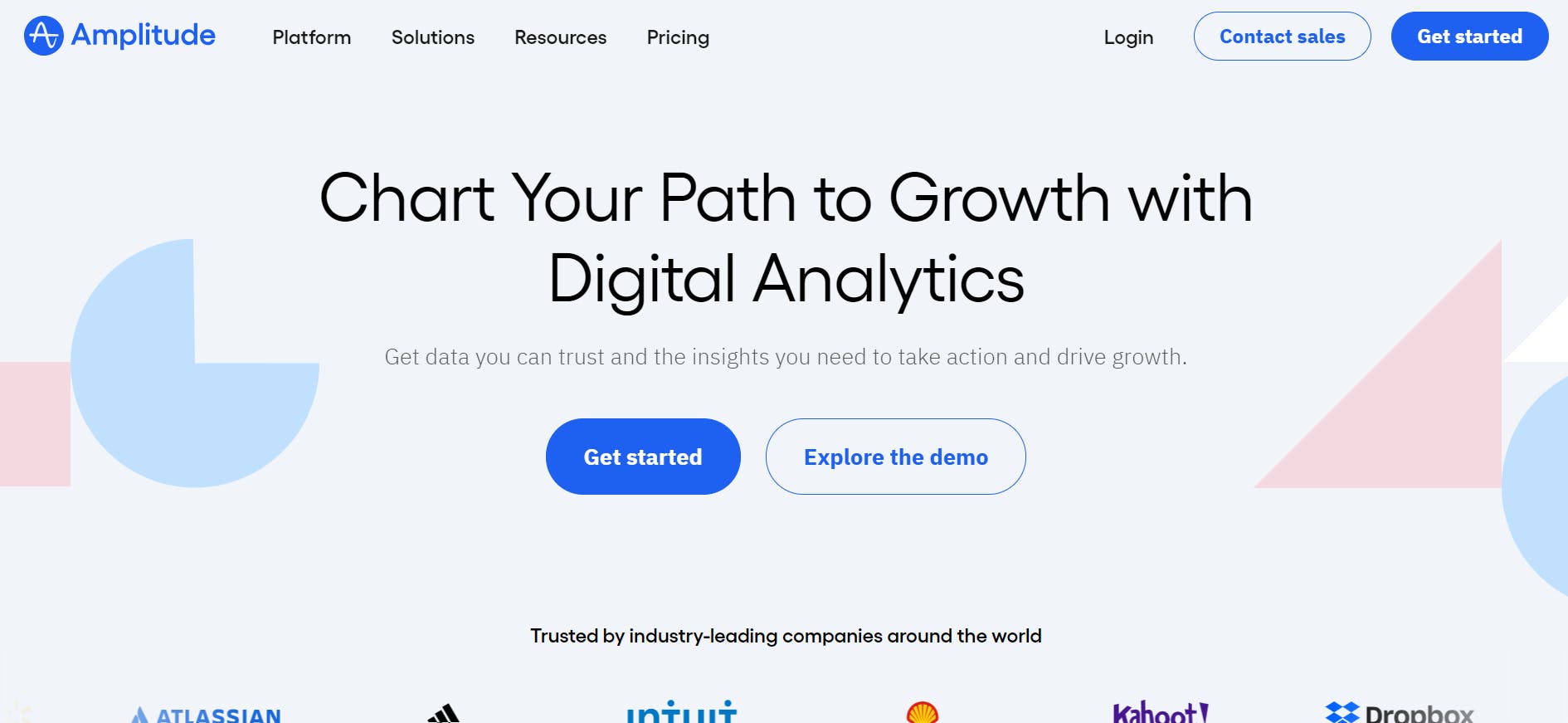
Sanity pricing
Sanity’s pricing starts at $15 per seat per month.
Hygraph
Hygraph, formerly known as GraphCMS, is a headless CMS that is well-known for providing a GraphQL-API that you can use to deliver content to end users. It is also known for its robust content federation capabilities, which allow you to unify and manage content from multiple sources.
Hygraph enables both developers and content teams to work seamlessly, with developers building custom workflows and integrations while content teams can manage, create, and publish content autonomously.
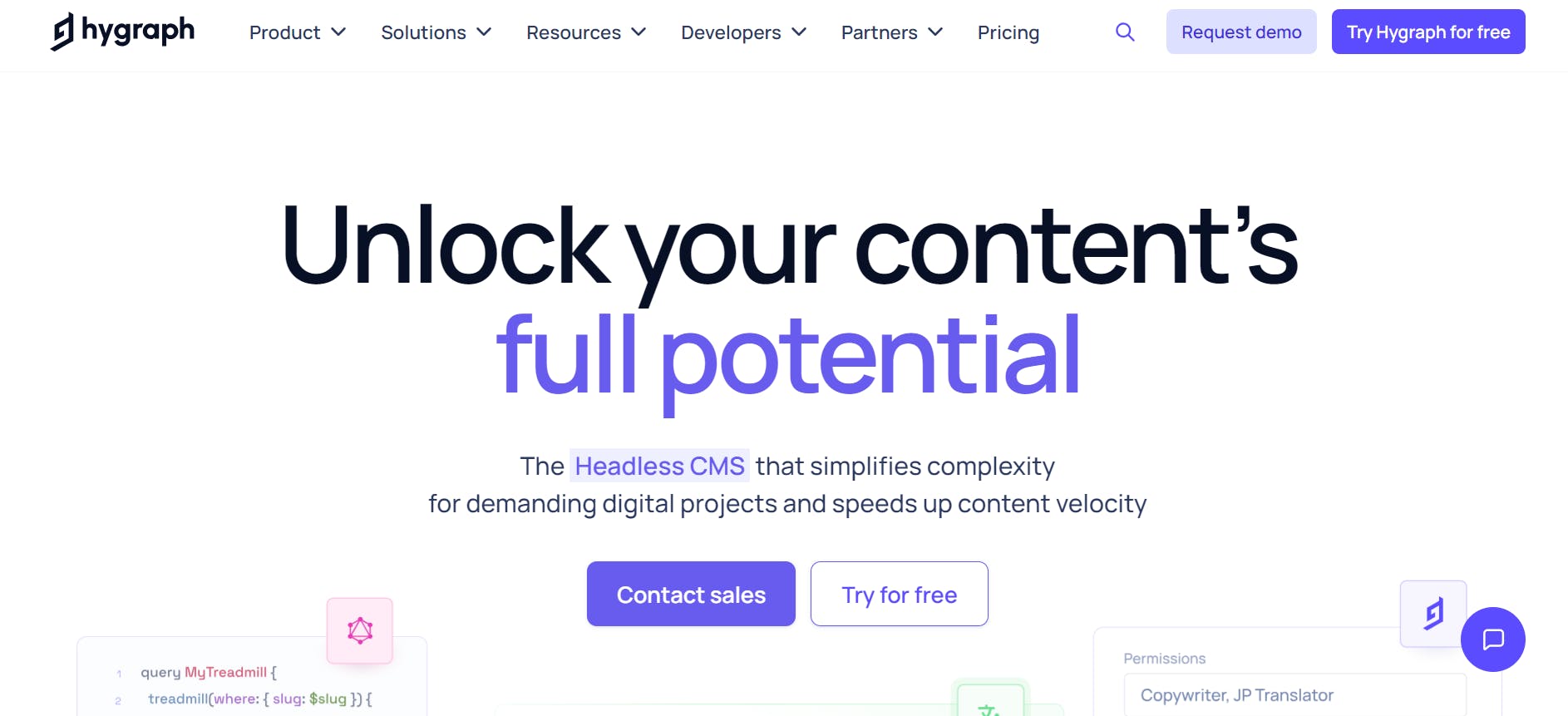
Hygraph features
- A GraphQL content API for fetching data from the CMS
- A GraphQL mutations API that enables you to programmatically create, update, or delete content, whether individually or in bulk
- An API playground for experimenting with Hygraph’s APIs
- Schedule publishing or unpublishing of content
- Live previews for your website content
- An app marketplace with 20+ apps
- 10+ starter applications
- Allows you to translate, publish, and manage multi-language content in one place. It also enables you to publish each locale independently.
Example website
Samsung's Members platform’s is powered by Hygraph.
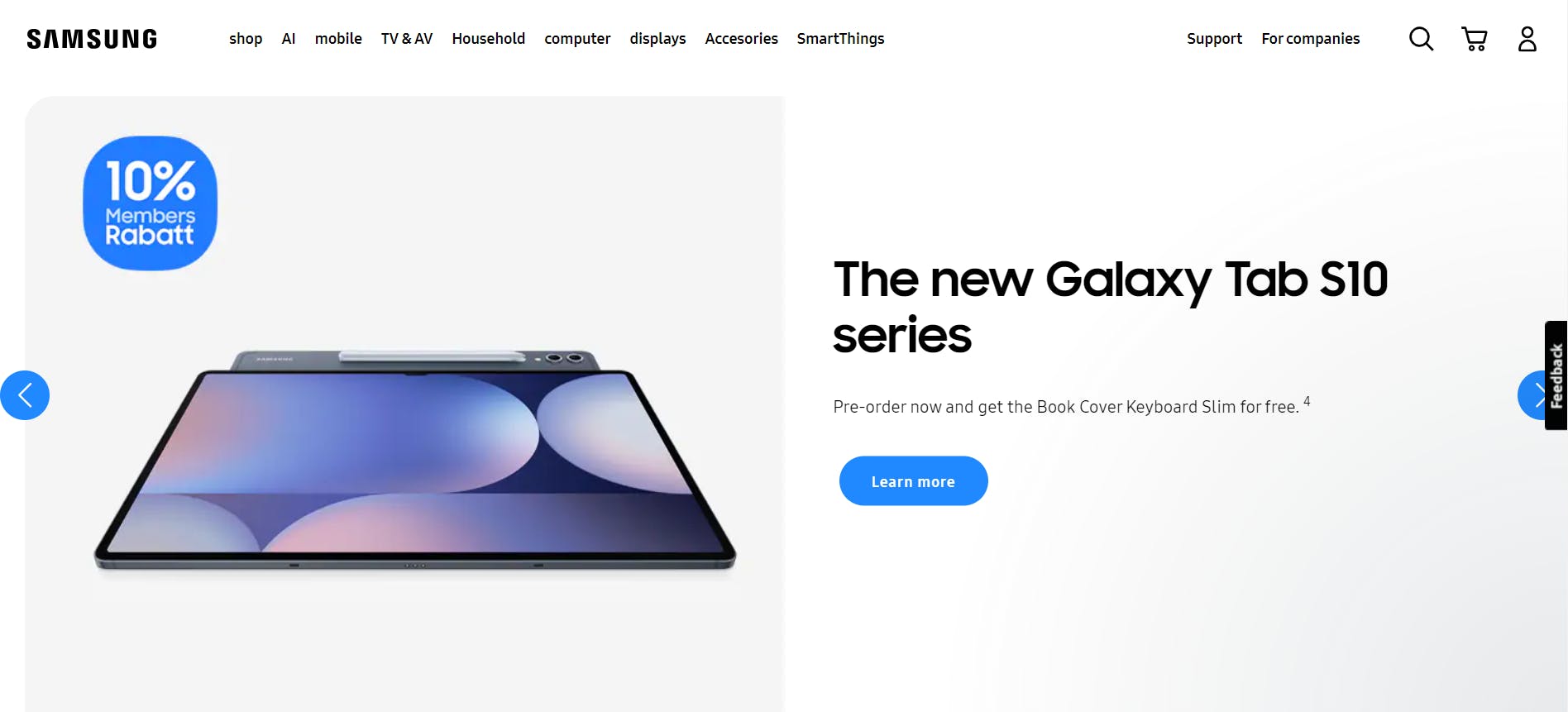
Hygraph pricing
Pricing starts from $199 per month.
E-commerce CMS
Unlike the other two types of CMSs we’ve covered, which have taken more of a Swiss Army Knife approach to websites, e-commerce CMSs are the opposite: they’re specialized to be great at one thing in particular, which is, of course, e-commerce.
While WordPress has the plug-ins and add-ons to make e-commerce a possibility, actual e-commerce CMSs have been built from the ground up to make selling products online as easy and pain-free as possible. If the core of your business is e-commerce, wouldn’t you prefer a solution designed specifically for your business and not something that can do a bit of everything?
Let’s explore some e-commerce CMS solutions that you can use as WordPress alternatives.
Adobe Commerce (formerly Magento)
Adobe Commerce, previously called Magento, is an e-commerce platform designed for businesses looking to build and manage large-scale online stores. It offers extensive customization and scalability and is well-suited for various e-commerce setups.
With its deep integration into the Adobe ecosystem, Adobe Commerce offers advanced analytics, marketing tools, and product management capabilities, making it a comprehensive solution for growing e-commerce businesses.
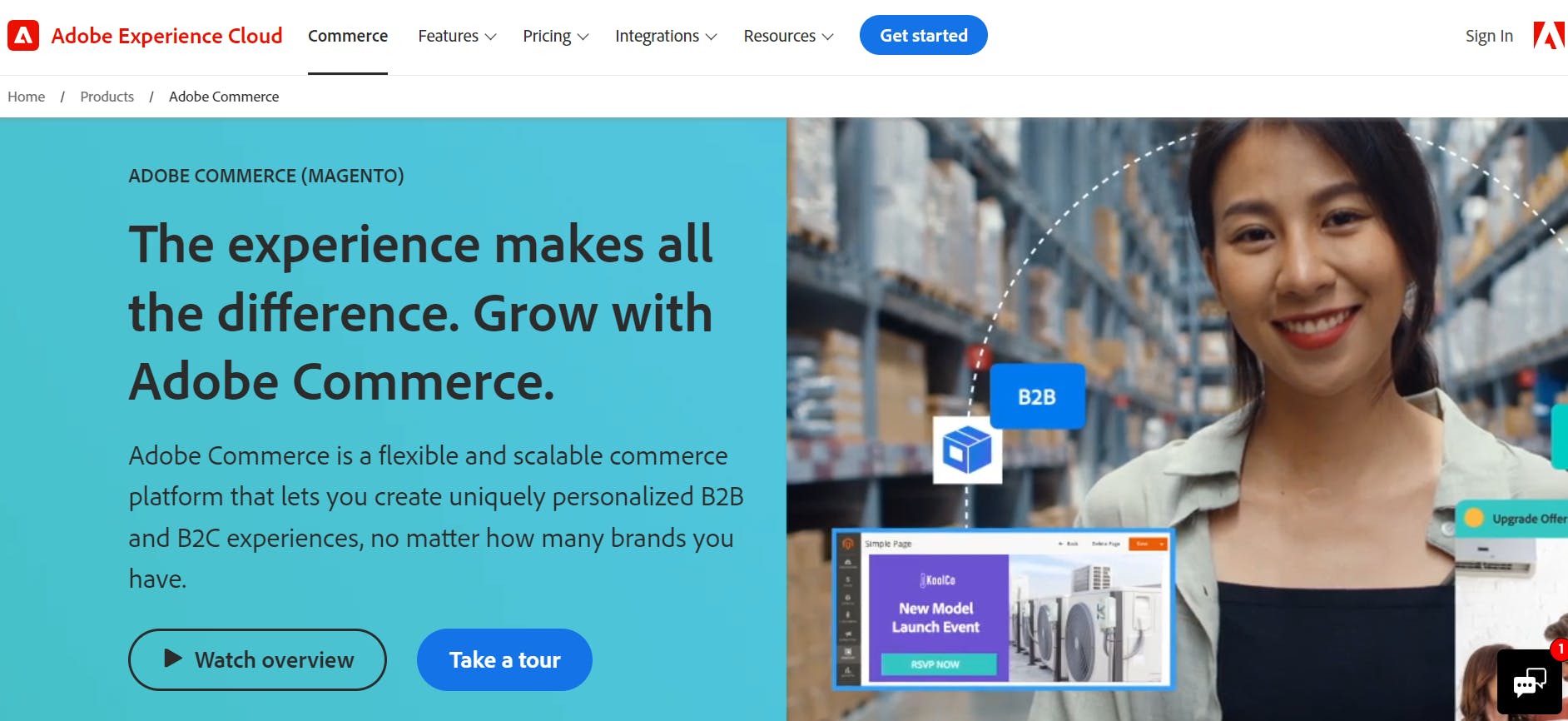
Adobe Commerce features
- Easy-to-use website builder
- A PWA studio that enables you to deliver app-like shopping experiences on mobile and desktop devices
- Data reporting and visualization functionality like an advanced SQL report builder, unlimited dashboard creation, and data exporting
- An e-commerce customer management platform that gives access to real-time order data
- Inventory and order management solution
- Live search functionality
- Adobe Sensei, Adobe’s AI service, which provides actionable data insights, generative AI, and more
- AI-powered product recommendations based on popular trends, product similarity, your shoppers’ behavior, and more
Example website
Maisons du Monde’s website is powered by Adobe Commerce.
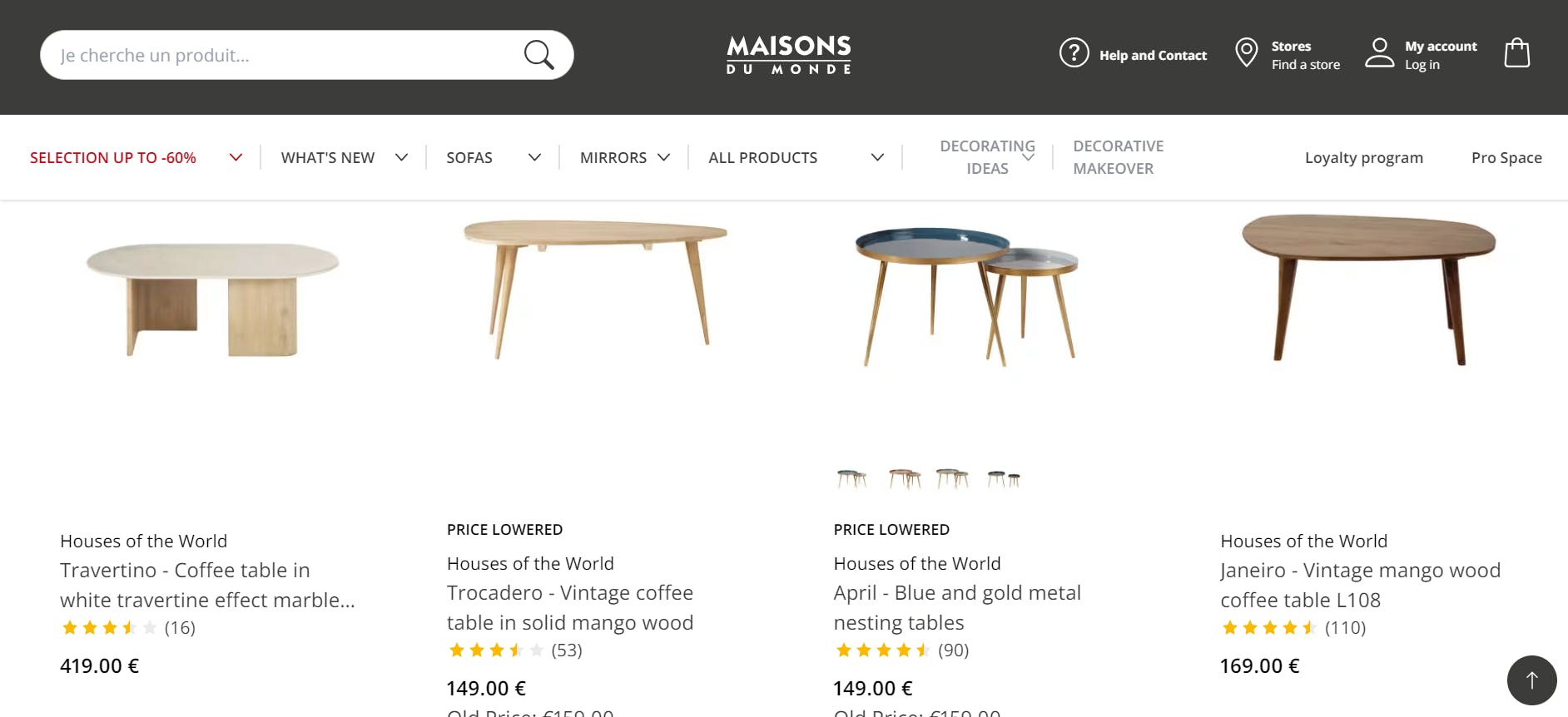
Adobe Commerce pricing
Adobe Commerce’s pricing data is only available on request.
Shopify
Shopify is a leading e-commerce platform that provides an easy-to-use interface for building and managing online stores. It is designed to help businesses of all sizes create fully functional e-commerce websites with minimal technical expertise.
Shopify’s all-in-one solution makes it a popular choice for entrepreneurs and small businesses looking to start selling online quickly and efficiently.
Shopify’s flexibility extends to its wide range of integrations and apps, allowing you to expand your store’s functionality as it grows. Whether you're just starting out or running an established online business, Shopify can adapt to your needs as your e-commerce operations evolve.
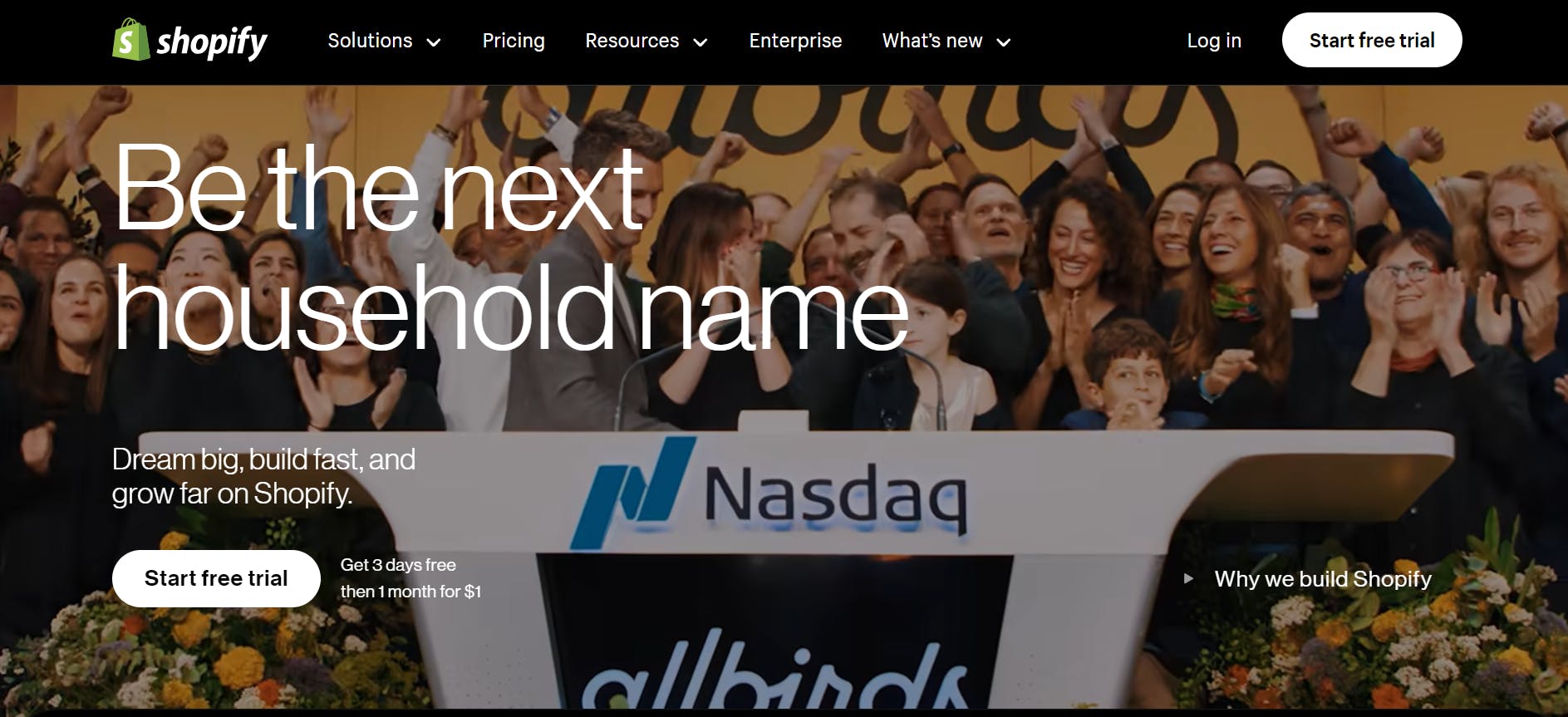
Shopify features
- Supports multiple sales channels, including Instagram, TikTok, Google
- 200+ themes
- Drag-and-drop editor
- Supports internationalization with the “Shopify Translate & Adapt” app
- Provides a Liquid templating language, which gives you greater control and allows for deeper website customization
- Provides over 8,000 third-party apps and integrations
- APIs (GraphQL and Rest), SDKs, primitives, and Shopify Hydrogen for building headless commerce storefronts
- Shopify Magic, “Shopify’s AI for Commerce” solution that helps with image and text generation, app review summaries, and more
Understanding Shopify CMS
Learn more about Shopify CMS and its pros and cons, and how to pair Shopify with a headless CMS like Prismic to power your headless commerce experience.
Example website
Magic Spoon’s ecommerce store is a custom website built with Shopify Liquid.
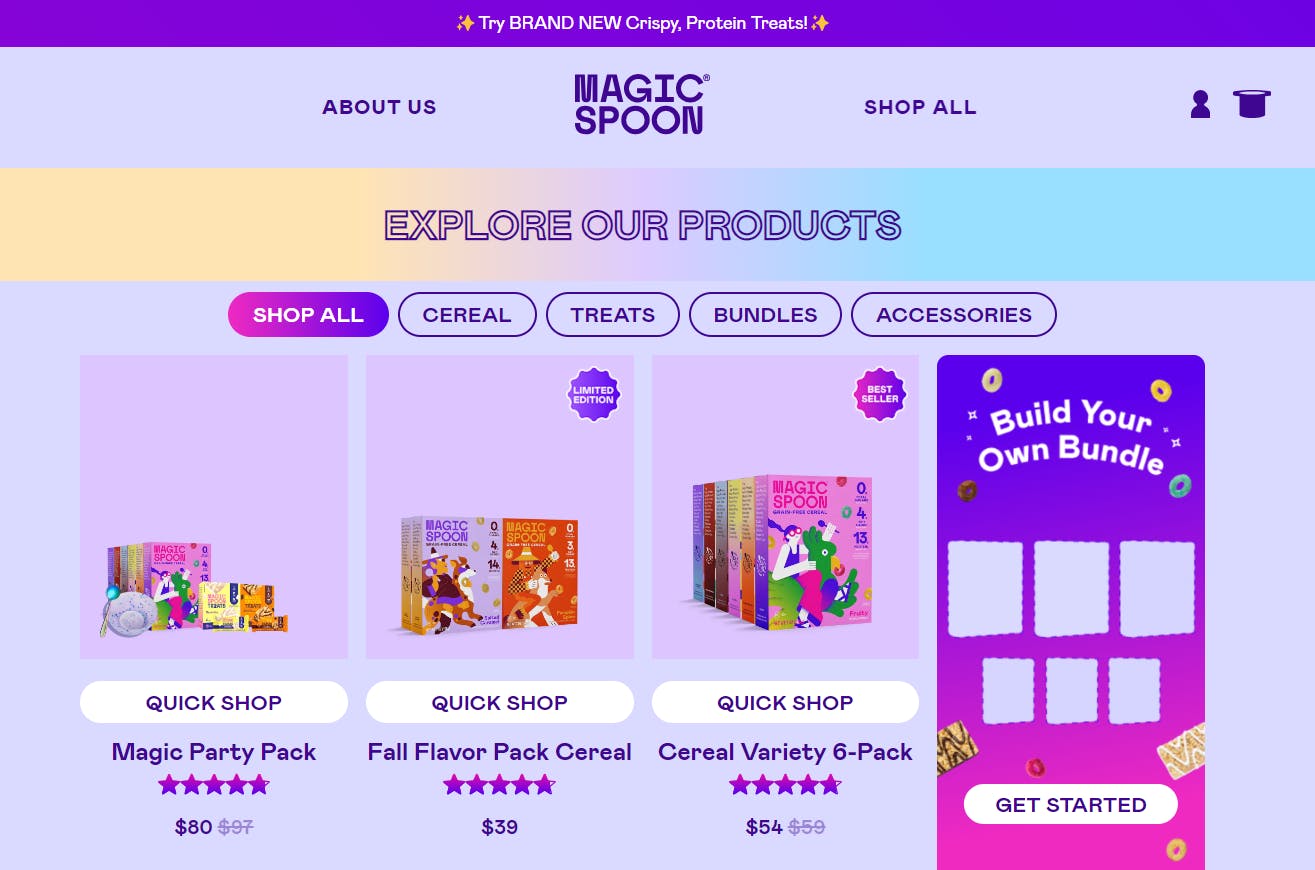
Shopify pricing
Pricing starts at $24 per month.
BigCommerce
BigCommerce is an e-commerce platform designed for businesses of all sizes. It offers a suite of tools for creating, managing, and scaling online stores. including multi-storefront management, international selling capabilities, and omnichannel support for launching your store across different platforms.
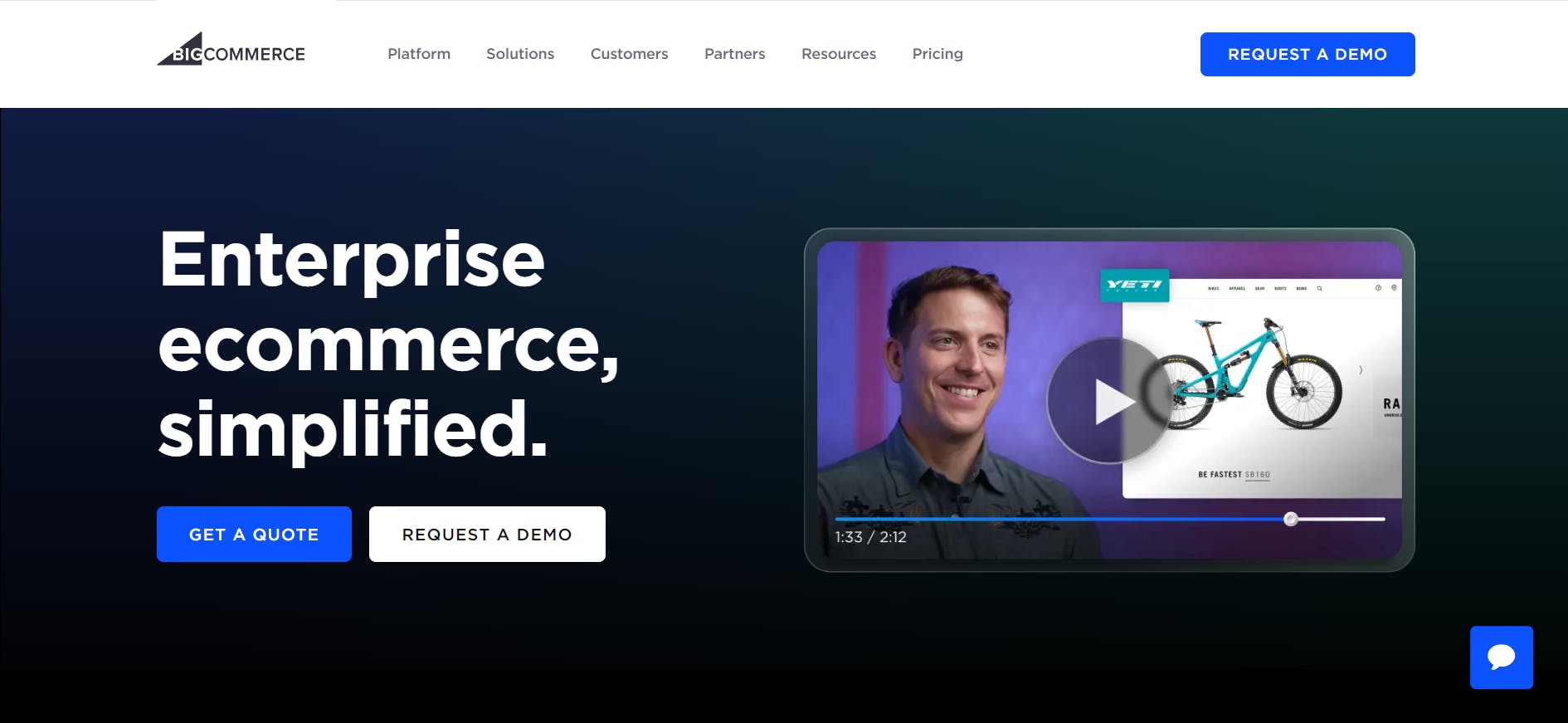
BigCommerce features
- Supports WordPress integration
- Visual page builder that supports custom code for deeper customization
- Supports various digital wallets, including Apple Pay, PayPal One Touch, and Amazon Pay
- Allows you to create headless commerce online stores by supporting frontend frameworks like Next.js and CMSs like Prismic
- Multi-language and multi-currently capabilities
- The Stencil CLI which allows you to build, test, and preview your store’s themes locally before pushing changes to a live environment
- Stencil — BigCommerce’s theme engine, which allows you to create responsive, customizable, and fast-loading themes
Example website
Burrow’s website is powered by BigCommerce’s headless solution.
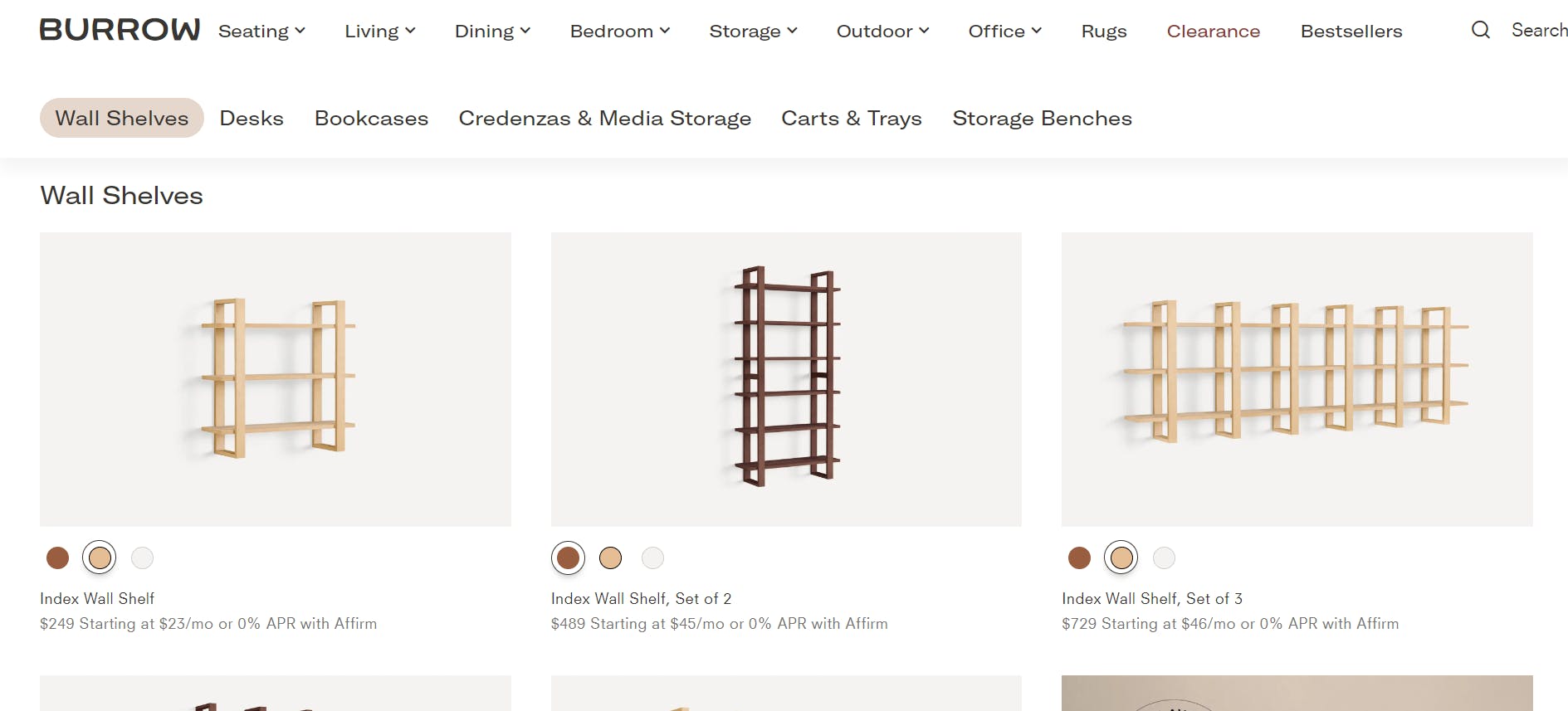
Check out our complete headless guide!
Get a deep dive into headless CMS, headless architecture, and more in our dedicated article.
BigCommerce pricing
Pricing for BigCommerce essentials starts at $29 per month. However, pricing for BigCommerce enterprise is only available on request.
Shopify vs. BigCommerce
Read our dedicated article on Shopify vs BigCommerce for a deep dive into the differences between both solutions.
Squarespace
Squarespace has an e-commerce platform that allows you to build online stores with ease. Its drag-and-drop website builder makes it simple to create and customize online storefronts without requiring technical expertise.
Squarespace is a good fit for small to large-sized businesses looking for an all-in-one solution to manage their e-commerce operations. It provides over 100 beautifully-designed templates optimized for different industries, use cases, and products.
Beyond design, Squarespace includes e-commerce features like inventory management, product merchandising, and seamless integration with payment gateways like PayPal, Stripe, and Apple Pay.

Squarespace features
- Drag-and-drop functionality
- 180 templates built for various use cases
- SEO, email campaigns, and social media tools to promote your online store and boost sales
- Mobile site management via Squarespace’s mobile app
- 20+ integrations to extend the functionality of your online store or website
- Store management tools for handling shipping, taxes, checkout, payments and more from one system
- Scheduling solutions for appointment management
- Supports banners and promotions for special sales campaigns
- Logo maker
- AI business name generator
- Squarespace Domains for domain registration
- Support creating online courses and membership sites
- Squarespace AI, which generates on-brand product descriptions and page copies
Example website
Not Work Related built their online store with Squarespace

Squarespace pricing
Pricing starts at $16 per month.
Conclusion
In this post, we’ve covered four types of CMS: monolithic, no/low-code, headless, and e-commerce. Here are some recommendations of what type of user would be best suited for each type of CMS:
- If you were looking to set up a quick blog or marketing page on a small budget, then a no/low-code CMS can do the trick.
- If you want to use the latest technologies to build custom websites with minimal restrictions and maximal content delivery across multiple channels, then a headless page builder is the best
Finally, of course, we still have the traditional monolithic CMS. If you are interested in an all-in-one solution (and can handle the limitations and drawbacks placed on you), then it might not be time to switch from your current monolithic CMS after all.
In closing, I hope this post has helped you identify possible WordPress alternatives for you and your website and has helped you in your journey to an awesome website.







